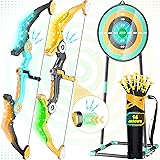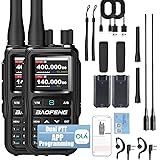Embarking on a solo survival challenge on a deserted island is an ultimate test of wits, resilience, and resourcefulness. As demonstrated in the accompanying video, surviving for seven days with no external food, water, or shelter requires careful planning and quick adaptation. The adventurer’s journey in the Pacific Ocean highlights the critical steps necessary to sustain oneself in a truly wild environment.
This remarkable feat of solo survival island living emphasizes the timeless principles of self-reliance. Facing the elements, finding sustenance, and building a secure camp are paramount concerns. Learning from such experiences can provide valuable insights into essential wilderness survival techniques, even for those not planning an extreme expedition. It offers a glimpse into overcoming formidable natural obstacles with limited resources.
Navigating the First Day: Establishing Survival Priorities on a Deserted Island
The initial hours on any remote island are the most crucial for establishing a baseline for survival. Immediate priorities include finding a safe location for a shelter and securing a reliable water source. These fundamental steps lay the groundwork for a successful week of deserted island survival.
The adventurer wisely prioritizes these needs upon arrival, surveying the land and scouting for potential resources. Being dropped off with nothing but limited tools means every decision holds significant weight. Understanding the immediate environment is key to making informed choices under pressure.
1. Securing Potable Water Sources
Water is arguably the most vital resource for short-term survival; dehydration can set in rapidly in a tropical climate. The video highlights several methods for obtaining drinking water. Discovering a stagnant freshwater pool early on was an incredibly fortunate find, especially since it showed no signs of saltwater intrusion or plastic waste, indicating it was unaffected by high tides.
However, even seemingly fresh water can contain parasites, necessitating purification. Coconuts provide another immediate source of hydration and electrolytes. Collecting rainwater is also a highly effective method, which was successfully done using plastic bottles found on the beach, after a night of rainfall. The adventurer used a LifeStraw, a personal water filter, for initial treatment of the mud water, understanding that a more thorough purification method would be required later, ideally with fire.
2. Constructing a Basic Shelter
Protection from the elements, including sun, wind, and rain, is essential for maintaining body temperature and conserving energy. A well-chosen shelter location balances exposure to cooling breezes with protection from severe weather. Compromises often must be made between these factors to ensure safety and comfort.
The adventurer chose a spot for his hammock and then began constructing a temporary shelter, considering both proximity to the beach for a breeze and jungle cover for protection. He demonstrated practical bushcraft by identifying and using resilient ground vines for cordage, noting they were far stronger than tree vines. Although not fully waterproof or complete by the end of the first day, the shelter provided crucial cover from light rain, showcasing the immediate necessity of having a rudimentary structure.
Essential Gear for Remote Island Survival
While the goal was “no food, water, or shelter” from external sources, specific tools are indispensable for increasing the chances of survival and documenting the experience. A well-thought-out gear list can make the difference between extreme hardship and manageable challenges during a solo survival island expedition. The adventurer’s chosen items reflect a blend of practical survival tools and necessary filming equipment.
- **Navigation & Communication:** An inReach device for emergency communication and tracking.
- **Medical & Safety:** A comprehensive medical kit containing bandages, Advil, and sunscreen.
- **Power & Filming:** External power banks, a solar panel, tripods, GoPro mounts, camera equipment, and a drone for documenting the journey.
- **Water & Fire:** A LifeStraw personal water filter and a titanium pot, which is vital for boiling water to purify it more effectively, once fire is established.
- **Food Procurement:** A snorkeling set (mask, fin, flippers), fish hook and line, a Hawaiian sling, a bow and arrows, and a custom-made spear gun.
- **Shelter & Comfort:** A hammock (chosen by audience vote), a bedsheet for warmth, and a small accidental pillow.
- **Tools & Utility:** A machete, a smaller knife, and paracord for various tasks like cutting, shelter building, and repairs.
- **Personal Items:** Coffee (a luxury item for morale), sunglasses, and a headlamp for nighttime visibility.
Each item plays a critical role in tackling the diverse challenges of a deserted island survival scenario. The balance between essential survival tools and documentation equipment shows foresight and experience.
Daily Challenges and Resourcefulness on the Island
Each day presents a new set of challenges that test an individual’s resolve and problem-solving skills. From unexpected rain to the constant search for food, adaptable strategies are key to sustained survival. The video showcases several instances where the adventurer had to quickly adjust his plans.
3. Adapting to Weather and Wildlife
Rain is a double-edged sword in survival; it provides much-needed water but can also make maintaining warmth and shelter difficult. The adventurer had to move his fire inside the shelter during a downpour to keep it lit, a smart tactic for preserving heat and morale. The shelter performed admirably, keeping the rain out and allowing him to collect precious rainwater in plastic bottles.
The sounds of creatures in the jungle and something “wandering into camp” at night highlight the ever-present wild nature of such an environment. Staying alert and being prepared for interactions with local wildlife is an unspoken rule of wilderness survival. This constant awareness adds to the mental strain of the experience.
4. Sustaining Energy through Foraging and Hunting
The absence of food is a significant drain on energy and morale. Early efforts focused on drinking coconut water for hydration and initial calories. However, a more substantial food source becomes a priority quickly. Spear fishing was attempted, yielding one small fish, estimated to be only about 50 calories, underscoring the difficulty of obtaining sufficient nourishment.
The adventurer also noted interactions with “piglet friends,” suggesting potential wildlife for hunting, though they proved elusive. The hope for lobster, mentioned in anticipation of a local fisherman’s arrival, emphasizes the desire for a larger, more satisfying meal. Cooking the small fish with almond leaves over a newly established fire provided a much-needed warm meal, a simple luxury that feels like home in such conditions.
5. The Importance of Fire and Mental Fortitude
Establishing fire is a major milestone in solo survival island scenarios. It offers warmth, protection, the ability to cook food, and sterilize water, significantly improving survival conditions. The feeling of getting a fire “up and running” is described as a “wonderful feeling,” boosting morale and providing a sense of accomplishment amidst the harsh reality.
Beyond physical challenges, the mental toll of lack of sleep and constant vigilance is evident. The adventurer mentioned feeling “fried” from sleep deprivation. Maintaining mental fortitude, staying positive, and finding moments of rest, even just “resting eyes” in a hammock, are crucial for enduring the full seven days. The support from companies like Duke Castaway, who handle logistics and permits, demonstrates how even “solo” experiences can be facilitated by external support, making such adventures possible for exploration and learning purposes.











